Apothek – The MusicTech Interview
Pair up a self-confessed studio perfectionist with a traditional songwriter and the results could be a long time in coming. Fortunately, Apothek’s debut album is finally out and it was worth the wait. MusicTech catches up with the nerd half to test him on his studio knowledge… Image credit – Anne Valeur
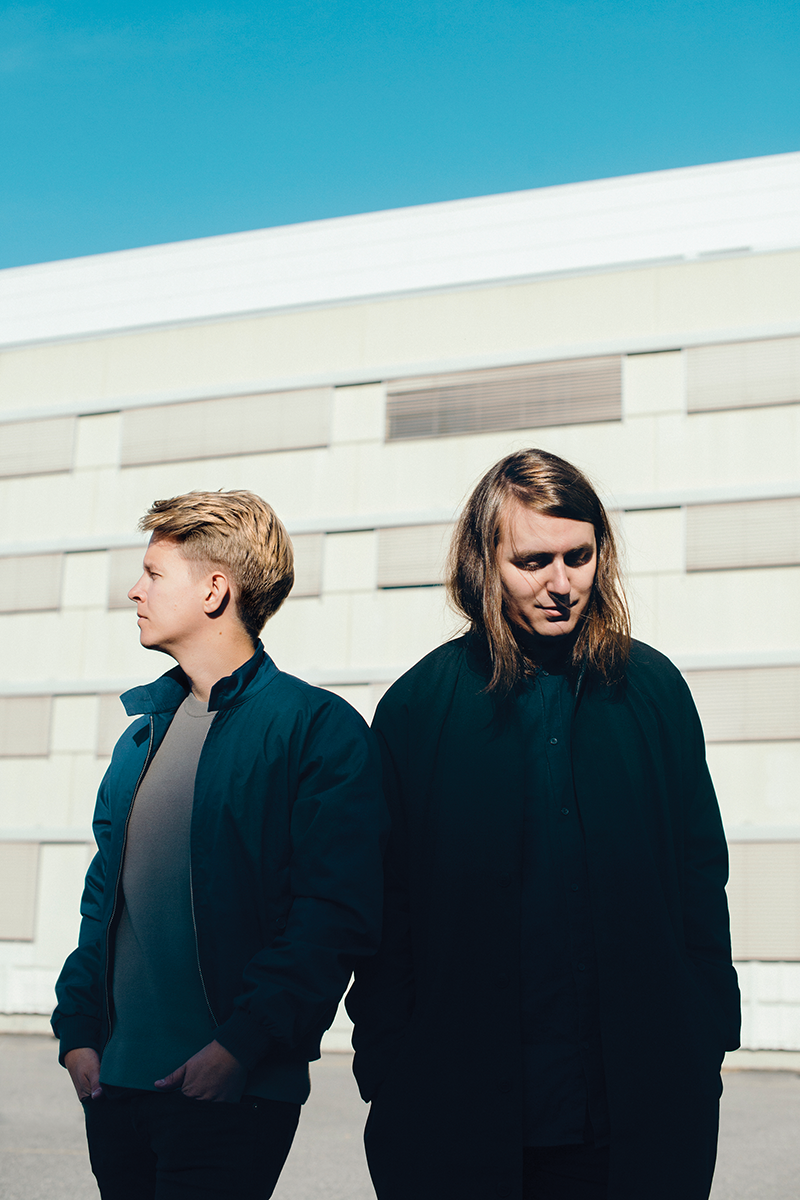
Pair up a self-confessed studio perfectionist with a traditional songwriter and the results could be a long time in coming. Fortunately, Apothek’s debut album is finally out and it was worth the wait. MusicTech catches up with the nerd half to test him on his studio knowledge…
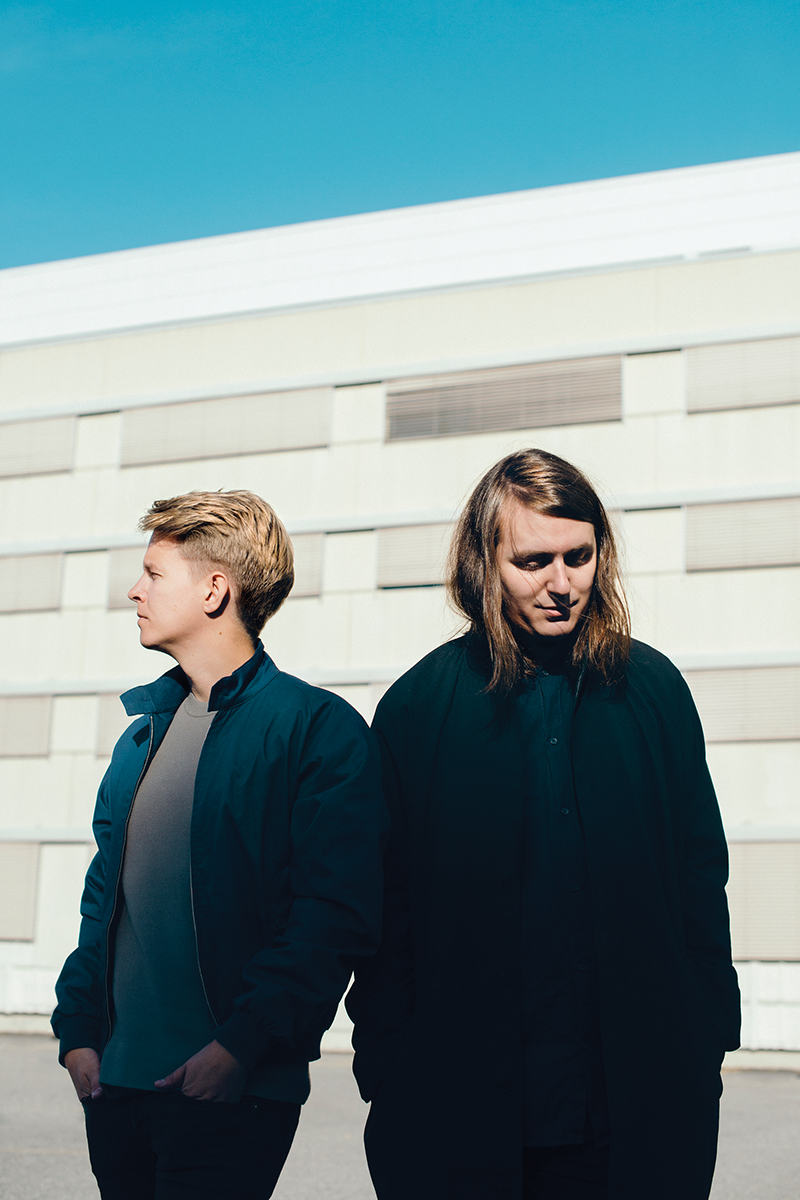
MusicTech: So how did Apothek come about?
NML: We are Nils and Morten and we’re based in Oslo. We came into the music scene from two widely different directions. Morten comes from a songwriter background and has his own career doing more acoustic stuff. I come from a more studio-focused and compositional background and am more of a studio nerd than he is.
I’ve run a studio in Oslo with a friend for the past six years, so we both came into the music scene quite gradually and naturally from two different backgrounds.
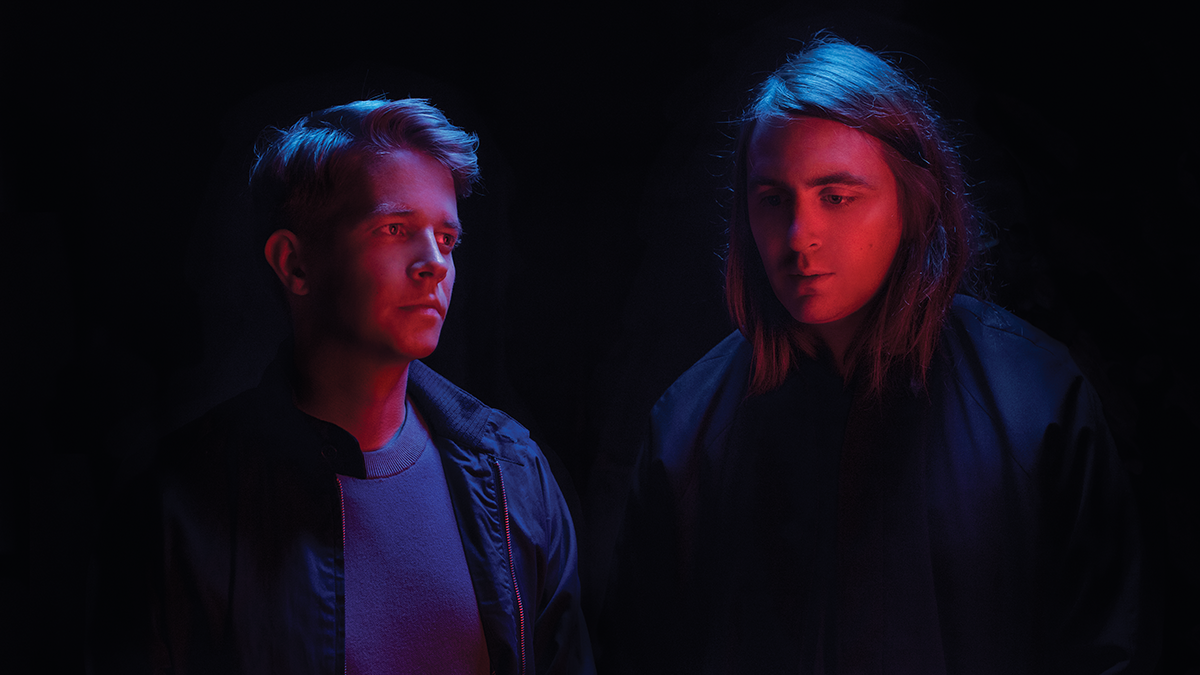
The Apothek Process
MT: You say you pay a lot of attention to production – where did that ethos come from?
NML: I think the key to it all is hard work and having a plan to focus on. ‘No shortcuts’ is probably our main motto. When it comes to songwriting and production, we really want to feel like we’ve explored every angle before agreeing the track is finished. And setting a few tripwires for each other along the way seems to help us from going down the same route each time.
MT: How does it work with such different people in the duo? What does each of you bring to a typical Apothek project?
NML: I think the main thing we each bring is flexibility and being complementary to each other. Usually, this will mean that if one of us is stuck, the other might see a way out of it. Since we largely work apart, it gives us the ability to have some sense of objectivity that bands that work as a group all the time might lose.
Morten brings the lyrical side and has a great sense of what makes a track work, as we want it, whereas I more often will be more focused on details. So in the grand scheme of things, while writing, Morten often has the macro focus and I have the micro focus.
MT: So it sounds like you work apart a lot, but how did each Apothek track start?
NML: It usually started with one of us having a phrase, a chord progression or simply a sound.
From there, I’d have a couple of sessions in the studio trying to expand the idea and send it to Morten, who would start working on the lyrics and melody lines, before workshopping it together again.
MT: How did you approach putting the Apothek album together in terms of studio use?
NML: Apothek is, without doubt, a band where we use the studio as an integral part of the process. We never really had a long period of time where we were supposed to go somewhere and record the album. It was made over a longer and more spread-out period, working when we had time between other projects.
Morten and I also recorded his solo record, The Sparks Flew Up, together in the same period we wrote parts of the Apothek record and I produced and played with other bands.
So, until a point where all the tracks had a clear shape and intention, we mostly worked separately and spread out.
All over the record, we had this mantra that felt like an integral part of the band’s sound. It was trying to make acoustic sounds sound really mechanical and mechanical sounds sound acoustic.
So I’ve spent a lot of time in my loft reamping synths, running them through different gritty effects and at the same time, slicing and trying to make my old piano sound like a strange synth. That’s been a really fun and new way to work.
Also, Ableton Live was a very integral part of the whole thing.
The last stage was spending a few months with Lars Horntveth of Jaga Jazzist in his Oslo studio – he produced the record with me. We wanted to make sure all the tracks had been optimised as far as we could take it and then Lars came in with fresh ears and helped with arranging and trimming away excess stuff.
He has a great sense of arrangement and form so that was probably the most intense time in making the record where an ‘outsider’ to the project could come in with little previous knowledge of the tracks or their process, and help us see where we could go even further or back off a bit.
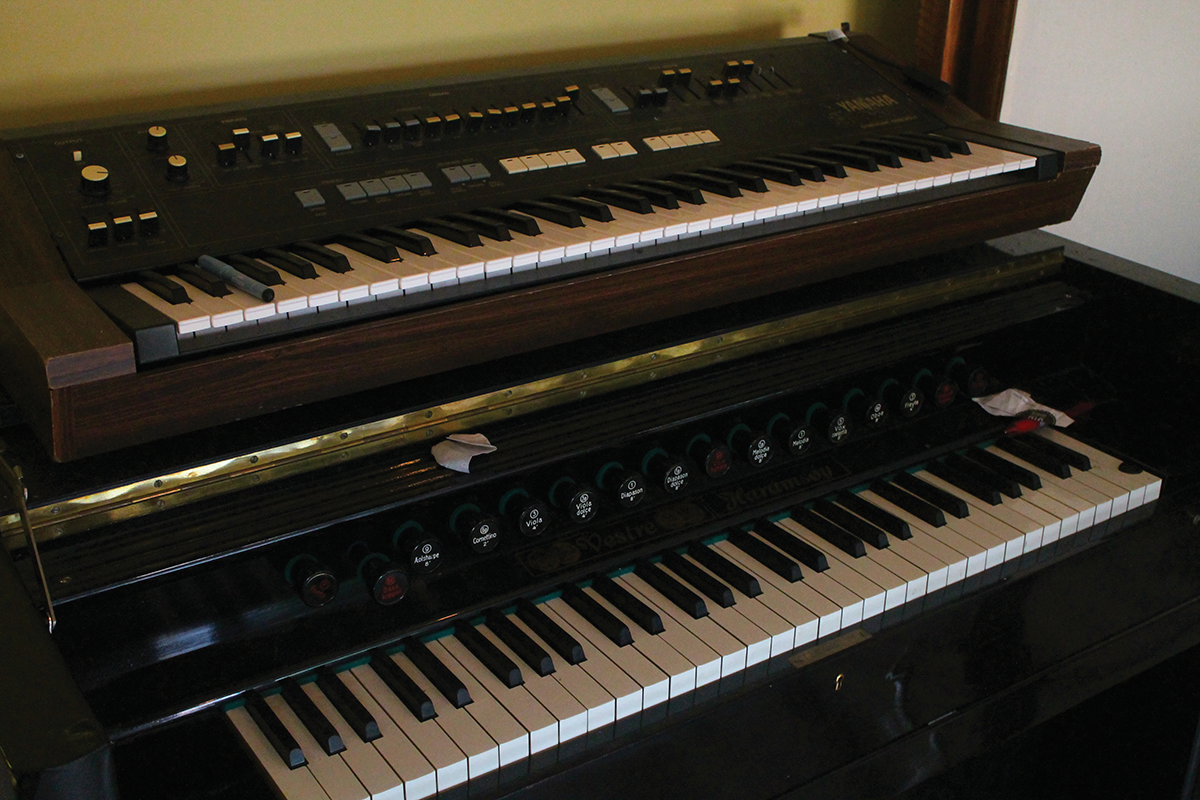
MT: Would you say there are any typical processes that you use on each track on the album?
NML: I use the internal microphone in my Mac a lot. It’s noisy and grainy and stupid, but it has a character that I appreciate. Every so often, I’d track a piano with proper microphones and dub it with an alternate take, just recording it with the internal mic placed on top of my piano.
Then I’ll treat the proper recording to make it sound grittier and I’ll try to make the laptop recording sound prettier. Then I’ll balance the two and keep them both in the mix.
A lot of the time, I will pitch-shift one of them or change them using a formant filter or Melodyne as well. Sometimes, it works; sometimes, it’s a total disaster. For example, the main chord parts in [debut single] Family is a Rhodes recorded like this, sliced up and triggered with a drum pad.
The Apothek Process
A huge part of the Apothek sound is processing – as they say, trying to make electronic sources sound acoustic and vice versa. Here, Nils details both his hardware and software solutions
MT: We like the sound of all of that hardware processing you use including all of the pedals. Tell us a little about how you use it…
NML: I try to use hardware as much as I can, since I have a lot of it around. I’ve been in love with old, strange spring reverbs for a long time and have a few of them. My very favourite is an old Premier tube spring reverb. I use it for almost everything and keep plugging it in as an insert on the mixer. Drum machines, synths, vocals, pianos – everything goes in! We also use the Boss CE-3 chorus a lot.
Sjur has a pretty crazy collection of old tape delays consisting of a Space Echo, Maestro Echoplex, Korg Stage Echo and Binson Echorec, so I tend to sneak downstairs to borrow them as they beat any plug-in. Amps are also a huge part of my workflow, so I have a few of them in my patchbay making it easy to re-amp stuff – great to give a sound some texture.
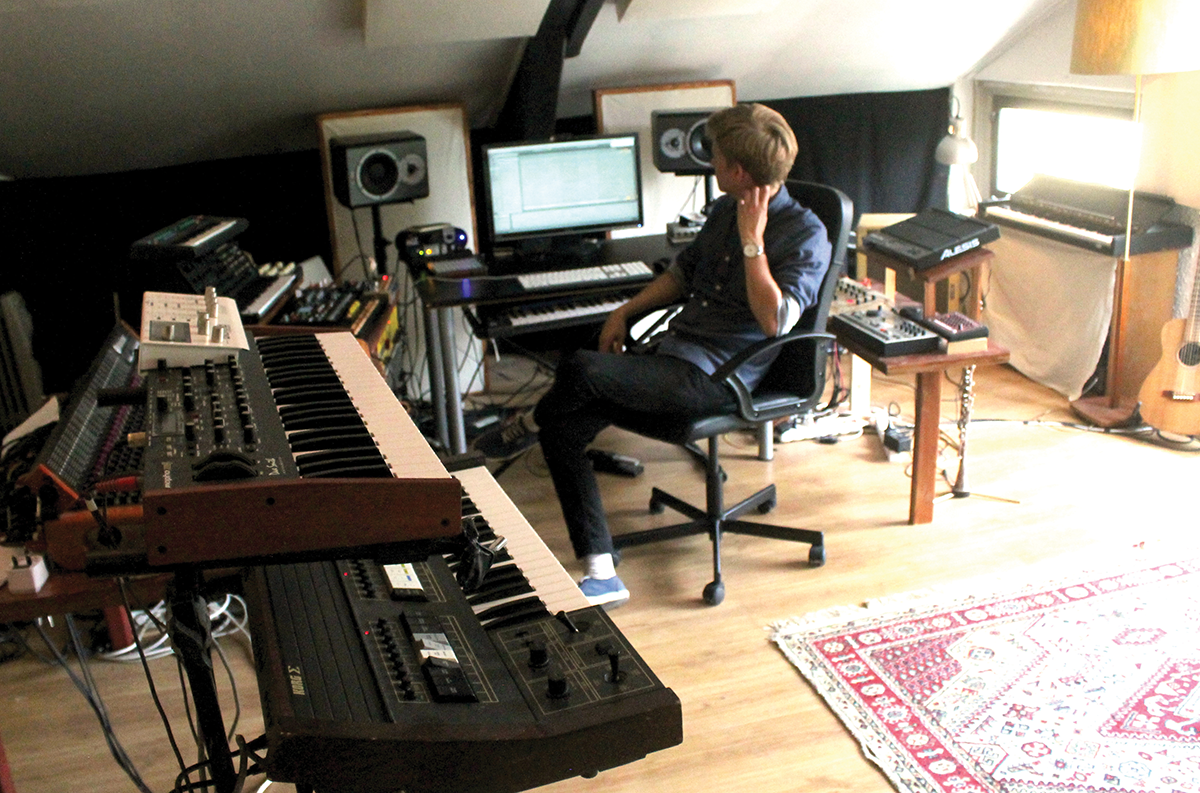
MT: What about other processing?
NML: Digitally, I have a few sets of IR reverbs made by people I know and have also fallen in love with some of the sample packs from Sound Dust and Rhythmic Robot. And again, I use Ableton Live – in many ways as one of my main instruments.
Drum Rack and Impulse holds all my samples made over the years; Sampler is super easy to create cool textures out of Morten’s processed vocals and the warp and slice features are great to make cool stuff with some personality.
We’ve also had a lot of fun processing Morten’s voice on this record. A lot of percussive sounds are made from small sounds between takes, for instance. No one would know what they are, but they bring something organic into the mix instead of just working with normal samples. We’ve also done a lot of really fun digital harmonising that went way past the normal fixed-interval pitch-shifting thing.
We kind of went a bit crazy with Melodyne there for a while. Haha! My piano is also a big part of this. It’s been recorded on everything from U47s to the mic inside my laptop, and both options are valued absolutely equally, which is kind of crazy. I have to say, Ableton Live has to get a lot of credit here.
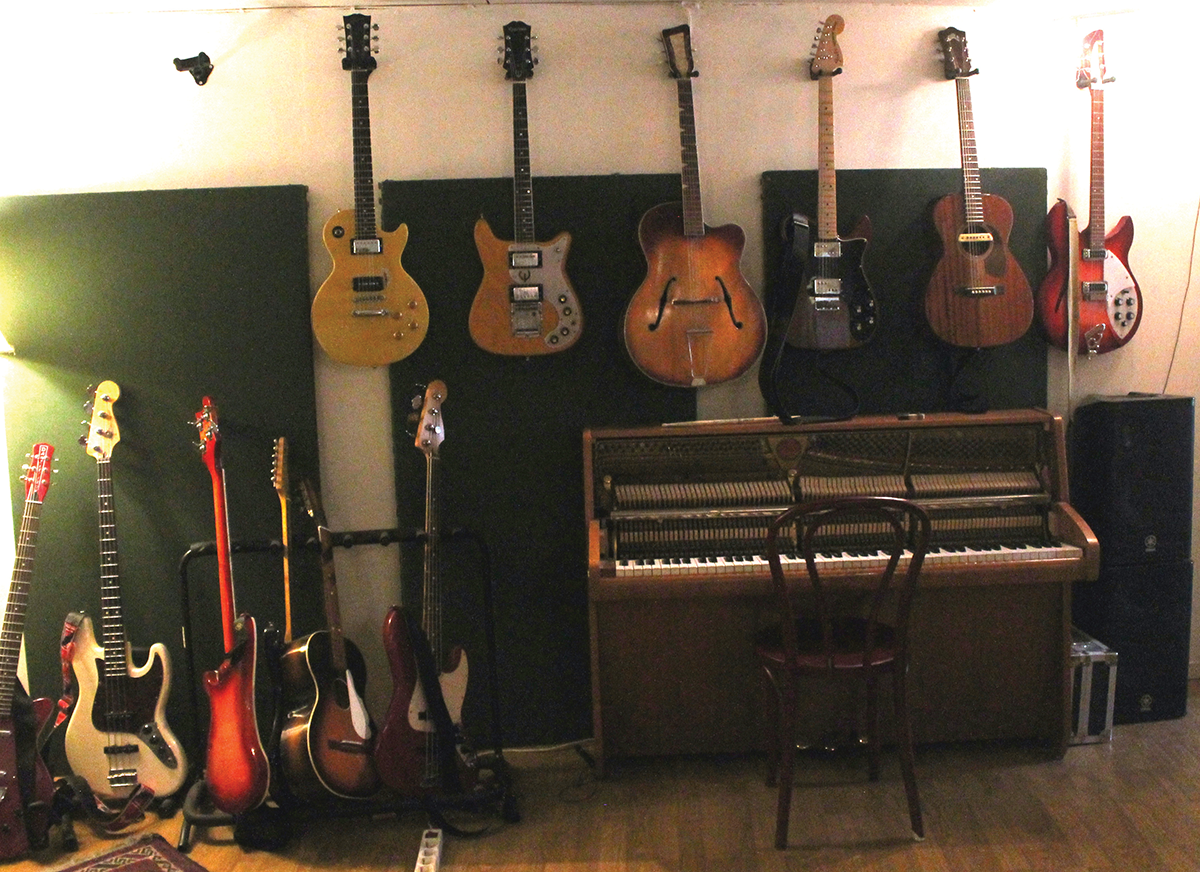
MT: Give us your top piece of advice…
NML: At some point, you get to where you know exactly how to get the sound in your head to end up on tape. My advice would be to keep trusting that voice and not listen to what sounds everyone else is making and comparing yourself to others too much.
You’ll only go mad. It’s really hard sometimes, especially in the periods where you’re kind of stuck (and you will be). But building some self-awareness in what you do and trusting your own sense of aesthetics is one of the most important things for me. A concept that gets challenged daily, luckily.
MT: Any advice from the music industry as a whole that you can pass on?
NML: Not really. I try to focus on what I know I can do, and that is not industry-type things. If anything, it’d be to surround yourself with people you trust and who know the rest of the stuff. Luckily, we get to work with Propeller Recordings who know what they are doing, and we feel confident following their advice on matters we’re not experts on.
The Apothek Studio
MT: Tell us a little about your studio: the main components and history of how it came together…
NML: My studio is located in an old industrial building on the east side of Oslo and has been my base for six years. I run it with my producer friend Sjur Lyseid and we’ve rebuilt and expanded it over the years until it got to the state it is in now – consisting of a loft studio that is my main space, and a downstairs analogue recording studio.
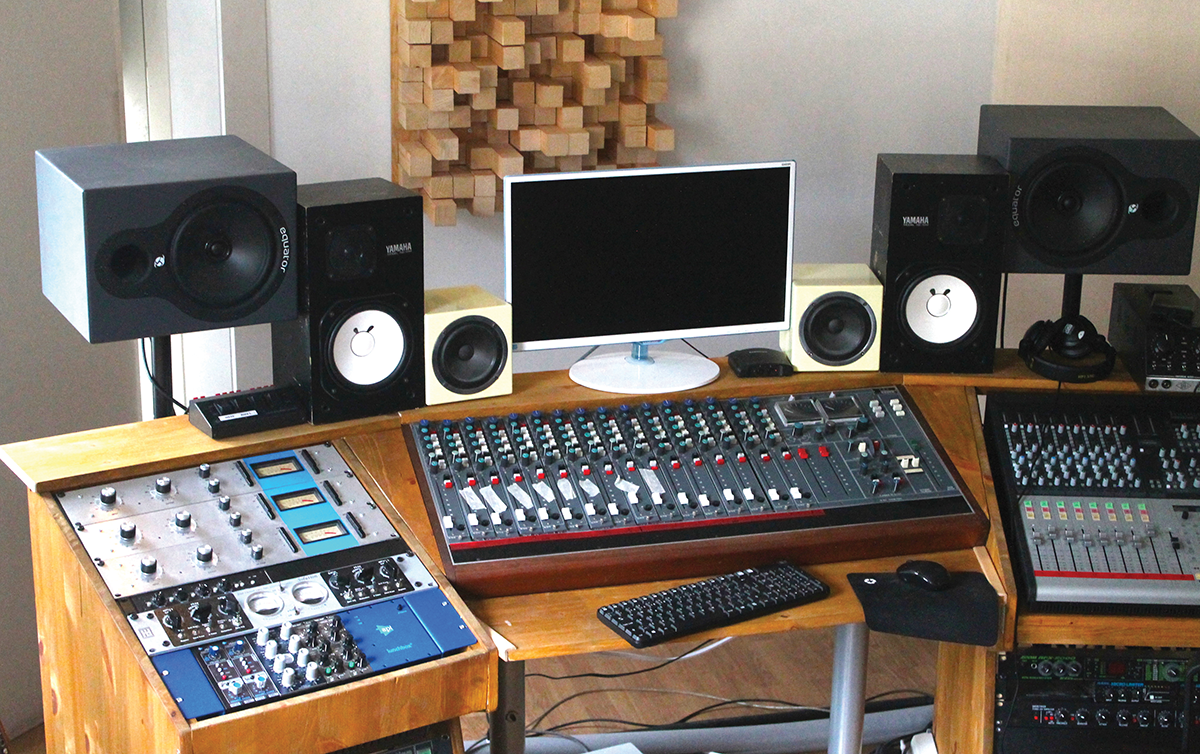
We came across it accidentally and initially rented just the first floor, and expanded a few years later. We’ve made a lot of records, film music and other stuff between us in this space.
My loft is made more for when I work alone, while the downstairs studio is made more for recording acoustic stuff and bands, as Sjur often produces bands. The main space is based around a Toft ATB 24 console where all my instruments are hardwired to their own channel, making it very easy to work quickly and efficiently.
So this setup is heavily based on instruments and synths and being able to get stuff on tape really quickly.
I have everything from old Korgs like the Sigma and Yamaha CS-15 to newer stuff like Vermona Mono Lancet and Pocket Piano and Moog SUB37, trying to cover most bases. I also have an extensive collection of effect pedals and old spring reverbs.
Then there’s my turn-of-the-century piano and all my guitars, as well as all kinds of strange bits and bobs I’ve collected over the years. I’ve been an instrument collector since I was a kid, so I can’t have everything out at the same time, but luckily, we have a lot of storage space as well…
The downstairs studio is based around an old Neve mixer and old outboards, including a Gates STA-Level, 1176s and various other great gadgets. We also have a selection of vintage microphones that Sjur has collected over the years, and a ton of amazing old guitars and amps. Both rooms are really great places to work.
MT: You use a lot of synths in your music – do you have any favourites?
NML: On the synth side, Vermona Mono Lancet, Korg MS-20, Critter & Guitari’s Pocket Piano, Yamaha CS-15, four DSI Mopho x4 and Waldorf Micro Q have also been a few of many favourites for this record.
I’ve always really loved sound sources that you have to fight to get the right sound out of. So synths like the Formanta Polivoks – a Soviet-built monster of a monosynth – is one of my absolute favourites.
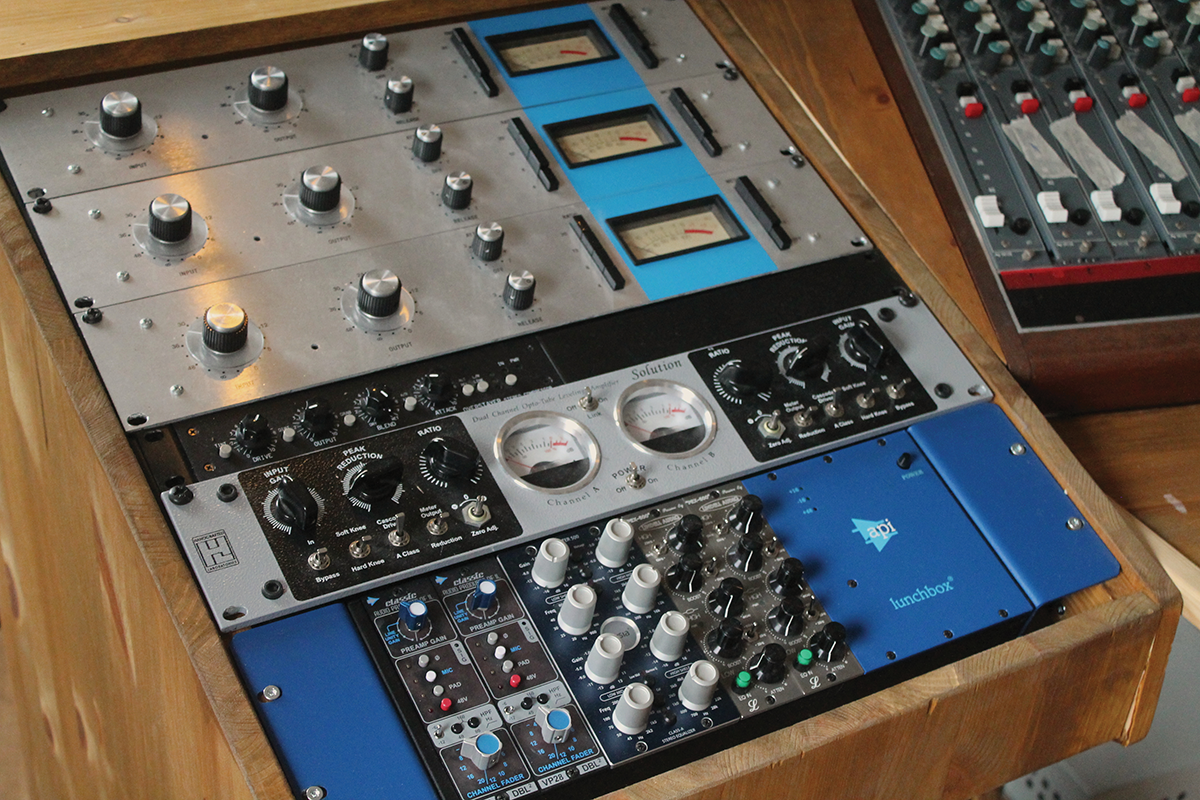
Elektron’s Octatrack and Machinedrum have been huge parts of Apothek ever since we made the first track, Family. The sequencers in those things are such amazing tools – go Sweden! Also, drum machines from Jomox are featured heavily.
MT: You have a very esoteric collection of gear. Is there anything you want to add to it?
NML: I’ve been dreading the day where I start a modular-synth setup for a long time. It’s on the wish list, but even higher on the list of things I fear – because I know that within a year, I’ll be the pasty white guy with a beard and a friggin’ cape, with a wall full of modules.
Time will tell… An ARP2600 would also be great fun. Apart from that, I’m actually quite content at the moment! I never thought I’d say that.
MT: What would you like to see developed in terms of studio technology and why?
NML: I remember when I first saw that they had made Melodyne polyphonic, and I thought that everything had changed. It just felt so new and complex that it melted my brain. I don’t think I can even begin to guess at what brilliant tech nerds will be able to do in the future, but I’m hopeful that I can be interested in it and utilise what they make in a musical way when they get there.
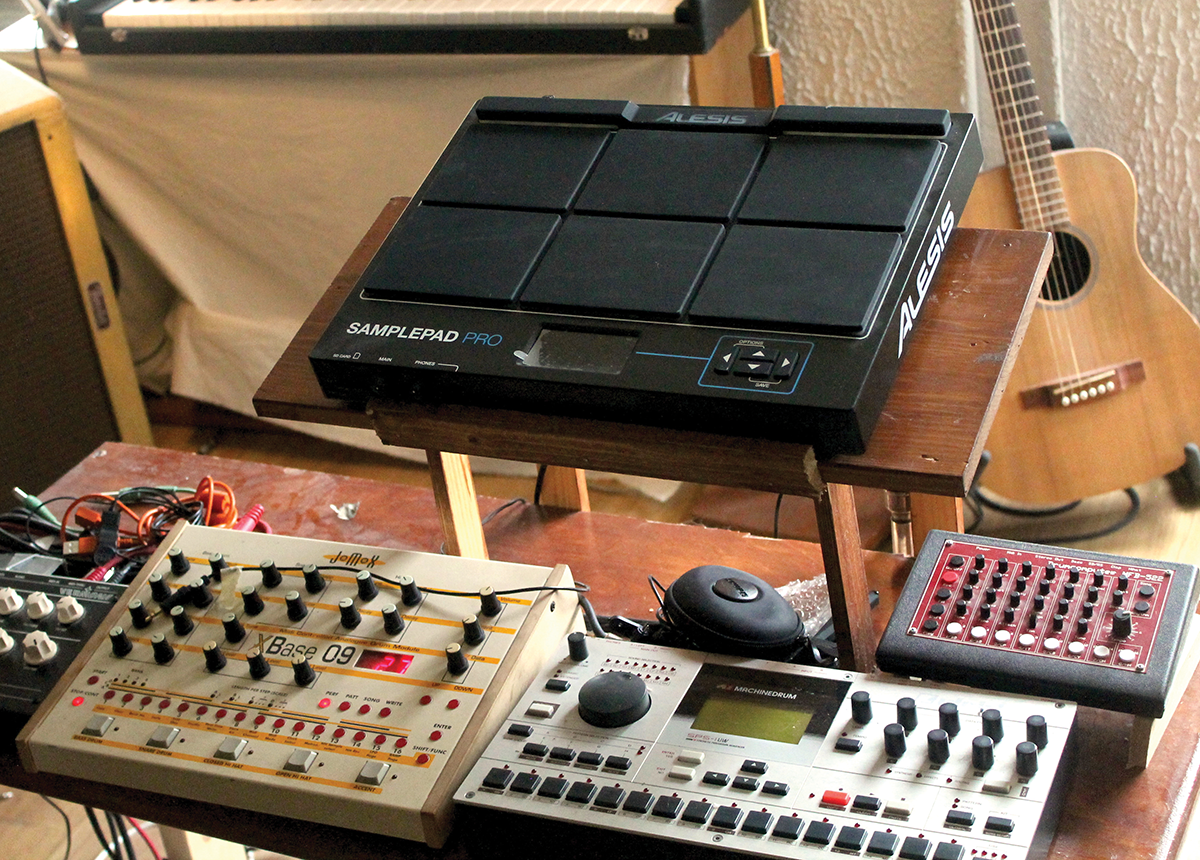
I’m excited to see what people like Audioease, Melodyne, Ableton, Max and stuff like that come up with in the future. And I’ll be sitting there with my keyboards trying to understand what they allow us to do and hope I’ll figure out cool ways to use it.
MT: So the album is out now – is it all that you expected it to be?
NML: We just wanted to make the best album we could at the time we made it, and we wanted it to sound natural and not forced in any way, despite it being very detailed.
Most of all, we wanted it to be a fun new way of working for the both of us, resulting in a record we could be proud of – both as a band and individually – knowing we’d made something that neither of us could have done alone.
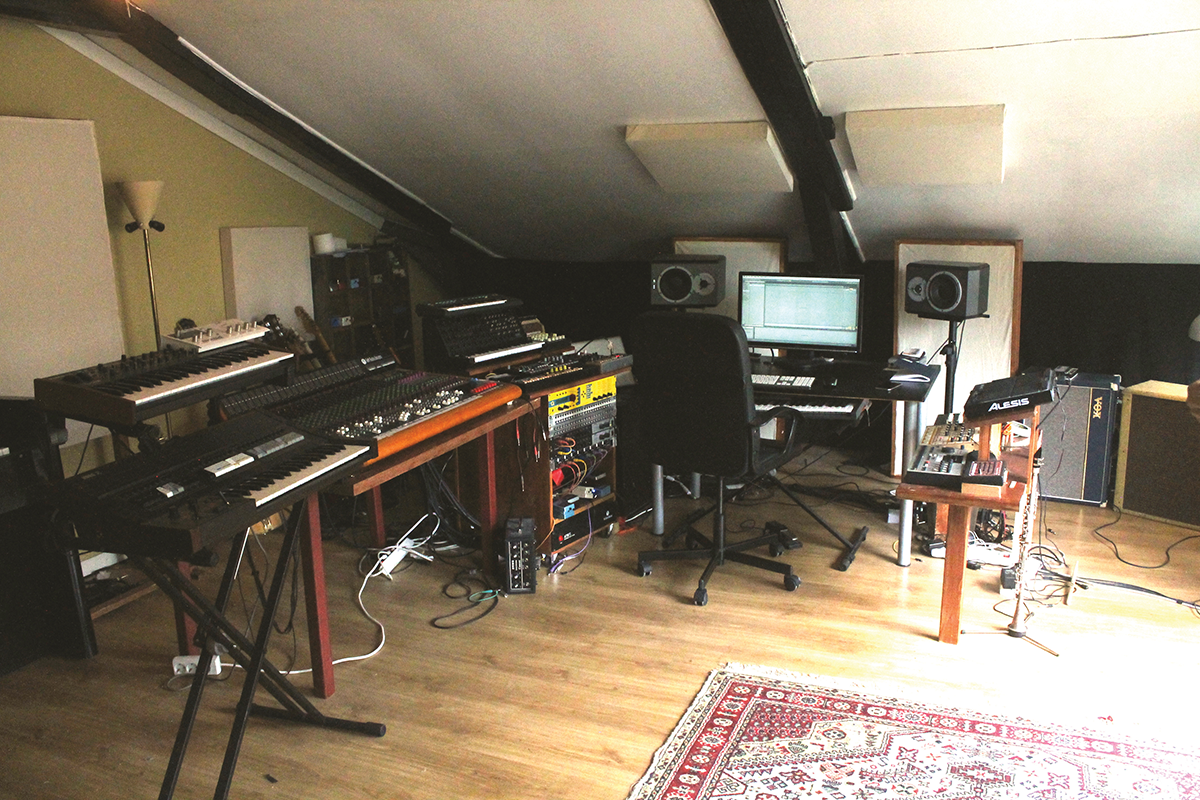
MT: What have you got planned now for Apothek?
NML: We’re extremely excited to show the album off and see how people react to it. We ’re also doing a lot of live shows and hoping to keep expanding that list. Lately, we’ve started thinking about recording new music. We’ve got some ideas flowing around, but nothing concrete yet.
MT: Finally, the question we always finish on: what is the future of music production, in under 100 words?
NML: I’m horrible with the Tarot cards, but I hope that we get to see music production in the pop scene turn more performative and less about laptops and headsets in hotel rooms. I like dusty instruments with dents and scratches making new sounds. [Too right – Ed].
Apothek’s self-titled debut album is out now via Propeller Recordings. See www.apothekmusic.com for tour dates and further info.
The Apothek Gear List
DAW
• Ableton Live – used more as an instrument than a DAW
• Some edits in Pro Tools
For synths, mainly analogue stuff:
• Korg MS-20
• Vermona Mono Lancet
• Korg Sigma
• Sequential Prophet 5
• DSI Mopho x4
• DSI Prophet 12
• Moog Sub 37
• Roland SH-09
Various pianos featured – at least six or seven, varying from small pianola to full-scale concert grand…
• Wurlitzer 100A
• Hohner Pianet T
• Various Rhodes models
Drum Machines/Electronics
• Field recordings turned into rhythmic patterns with Elektron Octatrack
• Drum programming done with self-sampled sounds in addition to Elektron
• Elektron Machinedrum
• MFB & Jomox drum machines
Console/Outboard
• Toft ATB 24 mixing console
• Old Microtech Gefell mic from the 50s
• Gates STA-Level (bought from an American radio station active in the 60s)
• Mixed on a Trident 80B console
Monitors
• Dynaudios
• Yamaha NS-10s
• Old Klein + Hummel speakers
Other Hardware/ Software
• Moog MF-102 Ring Modulator and filter pedals
• Old phasers from MXR
• Vintage chorus pedals from EHX
• Shady, DIY octave pedals from Russia and Germany
• A lot of IR reverbs. Both self-made and various odd-sounding spaces made by others
• TAL’s free synth plug-ins. Both their Elek7ro and their Juno plug-ins
• Also ACE and Bazille from u-he
• Various sample libraries from Sound Dust and Rhythmic Robot
• Simpler, Sampler and Impulse in Ableton
Live
• Two Macs with Ableton
• DSI synthesisers
• Vermona synthesisers
• Novation keyboards
• Critter & Guitari synthesisers
• Bastl Instruments sampler
• Elektron Octatrack and drum pads